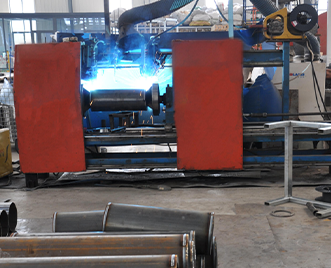Oct . 11, 2024 11:43 Back to list
submersible vs jet pump
Submersible Pump vs. Jet Pump Understanding the Differences
When it comes to moving water effectively in various applications, two popular types of pumps often come to mind submersible pumps and jet pumps. Each has its own advantages and disadvantages, making them suitable for specific situations. Understanding the differences between these two types can help in choosing the right one for your needs.
Submersible Pumps
Submersible pumps are designed to be submerged in the fluid they are pumping. Often used for deep-well applications, these pumps are powered by an electric motor housed within a sealed casing. This design allows them to push water up to the surface rather than pulling it, which is a key advantage.
One significant benefit of submersible pumps is their efficiency. Since they operate underwater, they do not lose prime and are less likely to be affected by air bubbles, which can interrupt operation in other pump types. Additionally, submersible pumps are relatively quiet, making them suitable for residential applications where noise is a concern.
However, submersible pumps tend to be more complex and can be more expensive than jet pumps. Installation requires careful handling, as they need to be properly sealed and positioned within the water source. Maintenance can also be more challenging, as accessing a submersible pump often requires pulling it out from the well or tank.
Jet Pumps
submersible vs jet pump

Jet pumps, on the other hand, operate above the water source. They use a jet of water forced through a nozzle to create a vacuum that draws water into the pump. This makes jet pumps widely used in shallow well applications and where the water table is comparatively higher.
One of the main advantages of jet pumps is their simplicity and ease of installation. Since they are above ground, accessing them for maintenance is much more straightforward than with submersible pumps. They also tend to be less expensive, making them a popular choice for homeowners looking for a cost-effective solution.
Nonetheless, jet pumps have some drawbacks. They typically have a limited lift capability and can struggle to provide sufficient water pressure in deeper applications. Additionally, they require a constant supply of water to maintain prime, which can be an issue if the water source fluctuates.
Conclusion
Choosing between a submersible pump and a jet pump ultimately depends on your specific needs and conditions. If you are dealing with deep wells and require efficient, quiet operation, a submersible pump may be your best option. Conversely, if you're looking for a more straightforward, cost-effective solution for shallower applications, a jet pump may be the way to go.
In summary, both pump types have their unique advantages and challenges. Understanding the environment in which the pump will be used, along with the specific requirements of your project, will help you make an informed decision. Whether you prefer the robust efficiency of a submersible pump or the simplicity of a jet pump, selecting the right device will ensure that your water needs are met effectively.
-
Submersible Water Pump: The Efficient 'Power Pioneer' of the Underwater World
NewsJul.01,2025
-
Submersible Pond Pump: The Hidden Guardian of Water Landscape Ecology
NewsJul.01,2025
-
Stainless Well Pump: A Reliable and Durable Pumping Main Force
NewsJul.01,2025
-
Stainless Steel Submersible Pump: An Efficient and Versatile Tool for Underwater Operations
NewsJul.01,2025
-
Deep Well Submersible Pump: An Efficient 'Sucker' of Groundwater Sources
NewsJul.01,2025
-
Deep Water Well Pump: An Efficient 'Sucker' of Groundwater Sources
NewsJul.01,2025
-
 Submersible Water Pump: The Efficient 'Power Pioneer' of the Underwater WorldIn the field of hydraulic equipment, the Submersible Water Pump has become the core equipment for underwater operations and water resource transportation due to its unique design and excellent performance.Detail
Submersible Water Pump: The Efficient 'Power Pioneer' of the Underwater WorldIn the field of hydraulic equipment, the Submersible Water Pump has become the core equipment for underwater operations and water resource transportation due to its unique design and excellent performance.Detail -
 Submersible Pond Pump: The Hidden Guardian of Water Landscape EcologyIn courtyard landscapes, ecological ponds, and even small-scale water conservancy projects, there is a silent yet indispensable equipment - the Submersible Pond Pump.Detail
Submersible Pond Pump: The Hidden Guardian of Water Landscape EcologyIn courtyard landscapes, ecological ponds, and even small-scale water conservancy projects, there is a silent yet indispensable equipment - the Submersible Pond Pump.Detail -
 Stainless Well Pump: A Reliable and Durable Pumping Main ForceIn the field of water resource transportation, Stainless Well Pump has become the core equipment for various pumping scenarios with its excellent performance and reliable quality.Detail
Stainless Well Pump: A Reliable and Durable Pumping Main ForceIn the field of water resource transportation, Stainless Well Pump has become the core equipment for various pumping scenarios with its excellent performance and reliable quality.Detail
